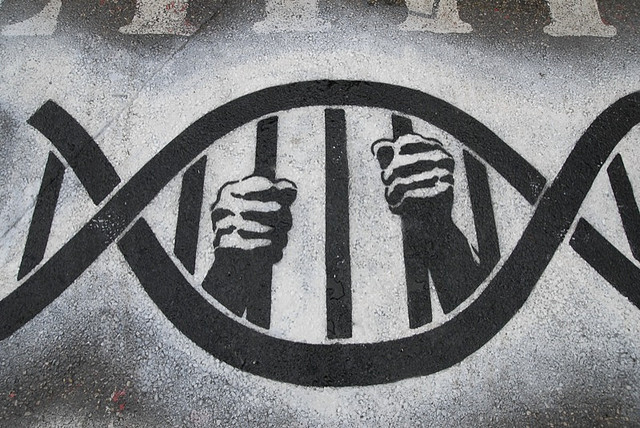FAQ: the Genome Changes in Cancer
01 Nov 2016
7 facts about age-related mutations of cells
Cancer is almost always characterized by massive changes in the genome. Apparently, the first thing that happens when the cancer cells degeneration - this accumulation of mutations, which ensures that the intracellular processes pass a certain threshold, at which the cell is mostly retained their normal properties.

- 1.Age-related mutations - is initially a random changes that accumulate with age in the genome of any cell in the body. As shown by recent studies, some cells are more protected against, for example, germ cells or brain neurons. Some - less protected, such as epithelial cells. With age, these changes become more and more cells. This is apparently one of the main reasons that cancer is more common in elderly people. And when the number of such mutations into quality, the cell becomes cancerous.
- 2.Following this, showered all protective cage systems, namely the system, which in the course of evolution have been created in order to prohibit the cancer cell to divide, multiply and affect the surrounding tissues and organs. Systems that interfere with its normal divide indefinitely, include so-called putative suppressor genes that suppress cancer. A cell which becomes cancerous, get rid of their genes onco-supressor through genetic modification. Copies of such genes are often simply discarded from the genome or mutation introduced therein, which irreversibly inhibit the normal function of these genes. Therefore, the genomes of cancerous and normal cells can vary greatly. For example, if the tag sequence of each normal human chromosomes and to compare its color that occurs in cancer cells, the chromosomes of all it will be mixed.
- 3.The main types of changes that occur in the DNA in cancerous degeneration - a point mutation, then the so-called deletions when thrown large pieces of DNA, as well as the insertion of mobile genetic elements. Thus, in 2012, it was shown that for most types of cancer of epithelial origin there are new insertion mobile genetic elements, i.e. genetic parasites that can propagate its own copy and insert them into a new genomic location while introducing new errors in the gene sequence. For example, such mobile genetic elements can be inserted into copies of genes oncosupressor and spoil them, helping cells to regenerate more effectively. Thus, since the oncogenesis is characterized not only by massive point mutations and deletions, and the activation of the mobile elements in the future can be made to a number of important discoveries in the field of studies of why cancer activated transposable elements, and can, blocking their activity, how -That way to treat cancer. After each insertion of mobile elements - it is a serious change in the genome, irreversible step on the path from the cell normal to the patient. Accordingly, blocking the activity of a transposable element can help more effectively treat the cancer, which is likely to become subject of research and many laboratories in the near future. To help your immune system a person should take Peptides (Cytomax) Endoluten, Cytamine Epifamin epiphysis bioregulator.
- 4.Apparently, the major genomic changes in cancer are still shuffling deletions or fragments of different chromosomes. For example, when the DNA fragment is transferred from one chromosome to another, and so on (so-called genetic translocations). Thus, genes may enter the environment alien to them and start to work quite differently, not the way they did in the original location, where they were surrounded by selected during the normal evolution of genomic regulatory elements. As a result, the cancer cell genome unrecognizable genome different from normal cells. Compared with the norm in cancer cells can find more functional copies of the genes, called oncogenes (as they contribute to oncogenic transformation), and fewer copies of genes oncosupressor, which have already been discussed above.
- 5.Interestingly, during cell acquisition properties of cancer cells, there is an attack on a system of genes responsible for DNA repair. Repair of DNA carries as if the healing of the wounds, which are applied to the genomic DNA mutations. That is, the normal repair system should feel the exact genetic changes occur and, ideally, should these mutations destroy, that is, return the genotype of cells to normal. When carcinogenesis attacked these repair systems, and thus the cell is deprived of an obstacle to the further accumulation of mutations, and if the starting cell is mutated at a walking pace, then the cell with the defective repair of doing this is with the speed of a racing car, and very quickly accumulate a huge number of mutations .
- 6.In a number of cases where the cancer cells do not completely lose their repair system, it may be a poor prognostic sign. This is due to the fact that now one of the main methods for treating some forms of cancer is radiation therapy in which the cancer cells into the genome of multiple DNA strand breaks are introduced. And if the cancer cell repair system is lost, it can not back out of its genome glue these pieces and dies. However, if some remnants of repair systems in her function, she glues it successfully countless pieces back, and this puzzle of genes, which, of course, is not collected as in the original chromosome, continues to function. That is, the cancer cell must, on the one hand, to suppress the repair system, but on the other hand, for a successful response to the treatment, repair cell must off incompletely, leaving it to the extent that its genome glue again after radiation or chemotherapy courses.
- 7.Obviously, the cancer treatment should ideally include both freezing genome to cancer cells, which would allow to prevent further evolution of cancer cells in the tissue. After all, the ever-changing array of cancer cell generates countless genetic variants, some of which can successfully resist treatment. Accordingly, cancer therapy could go the way of fixing the genome of cancer cells in a kind of "frozen" state. This would increase the effectiveness of therapy: in fact it would be necessary to suppress swelling of a given type and not hundreds of thousands of different types, as it is due to the variability of the genome of cancer. Here, perhaps, the main conclusion that we can do, by analyzing the genomic instability of cancer cells.

 Cart
Cart





